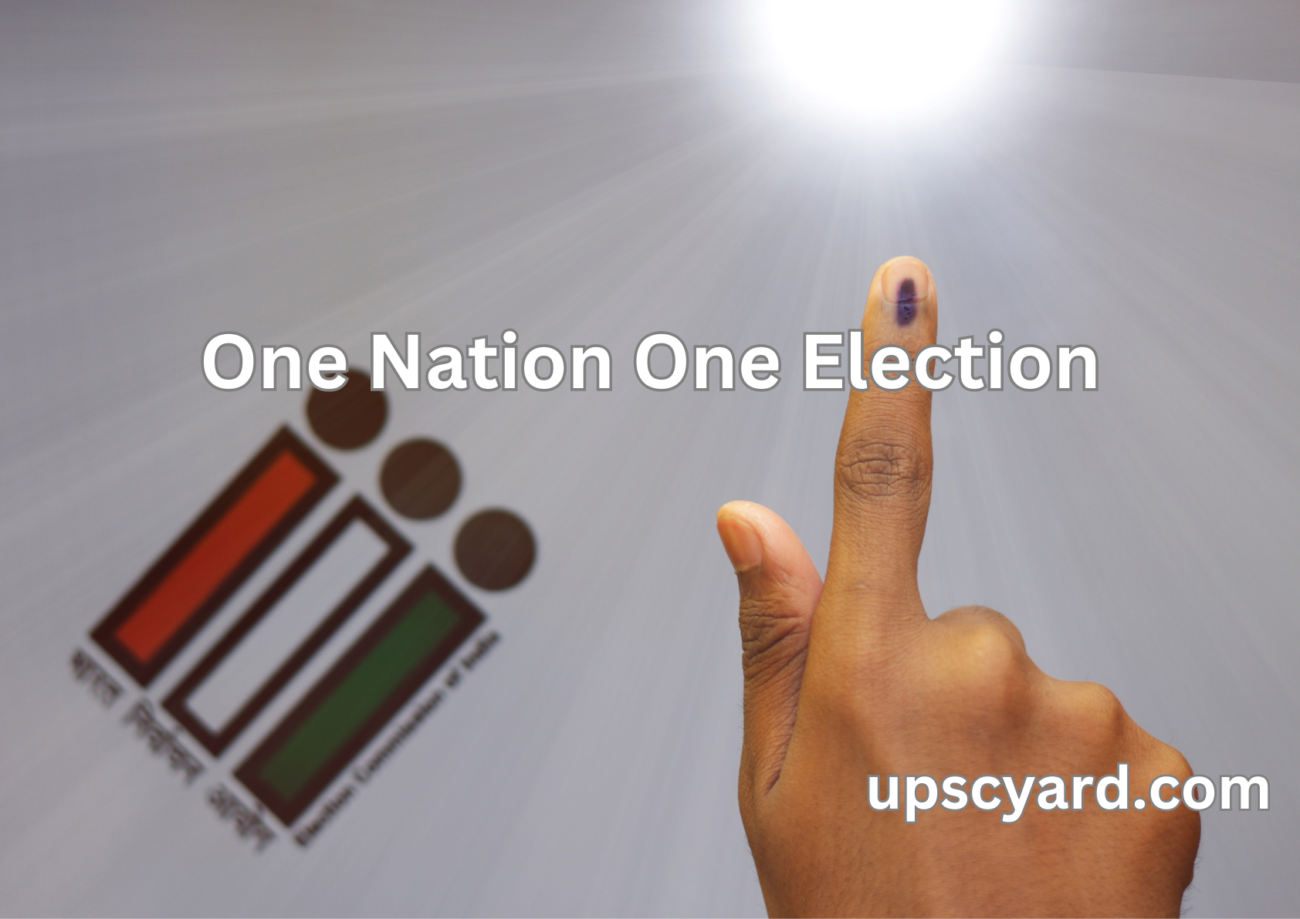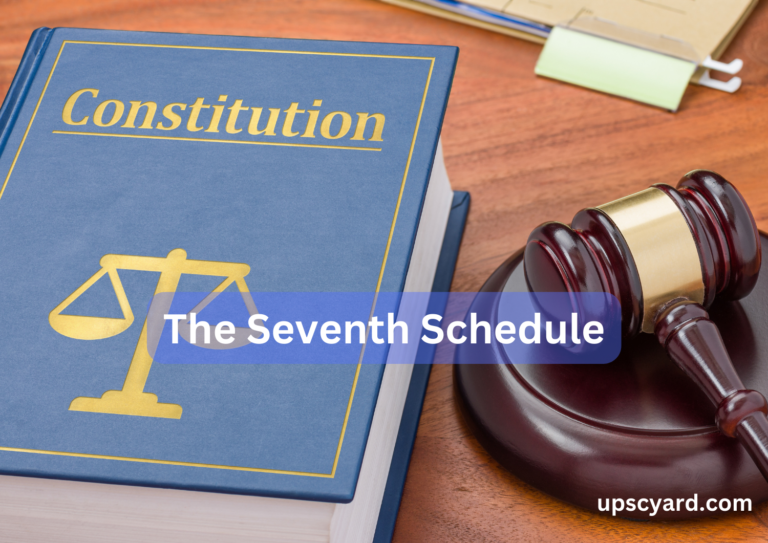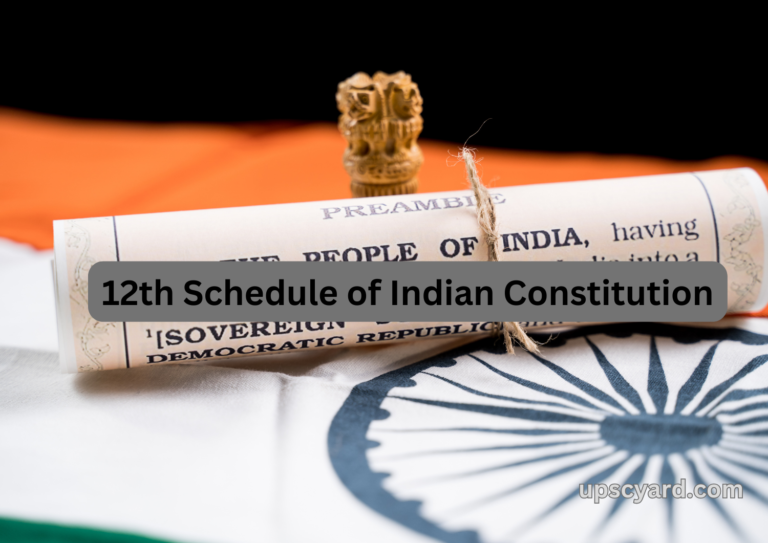One Nation One Election | Constitutional challenges
The concept revolves around organizing the electoral cycle in India in such a way that elections for the Lok Sabha and State Assemblies are synchronized, allowing both to be conducted within a specific timeframe.
One Nation One Election in Past
Contrary to the notion that One Nation One Election is a new concept in India, historical evidence suggests that simultaneous elections for the Lok Sabha and state assemblies have been previously conducted in our country, specifically in 1952, 1957, 1962, and 1967. However, this practice was discontinued in 1968-69 due to the early dissolution of certain Legislative Assemblies for various reasons. Despite efforts to reintroduce this election system, there is currently no consensus among political parties.
Advantage of One Nation One Election
- Promote transparency and accountability by monitoring poll expenses and party expenditures, leading to efficient utilization of public funds.
- Reduce the strain on the administrative setup and security forces by conducting elections once in five years, allowing them to focus on their regular duties and developmental activities.
- Ensure the timely implementation of government policies as the administrative machinery can prioritize developmental work rather than being engaged in election campaigns.
- Address the issue of short-term decision-making by ruling politicians for immediate political gains, enabling them to make long-term decisions that benefit the country.
- Provide sufficient preparation time for all stakeholders involved, including political parties, the Election Commission of India (ECI), paramilitary forces, and civilians, for smooth conduct of elections every five years.
Disadvantage of One Nation One Election
- Differentiate between state assembly and Lok Sabha elections, as regional parties focus on local issues while national parties emphasize national issues, potentially hindering the effective representation of local concerns by regional parties.
- Highlight the financial and strategic disadvantage faced by regional parties in competing with national parties in terms of election expenditure and strategies.
- Emphasize the close association of assembly elections with local issues and voters, making it challenging for regional parties to accept the idea of one-time elections.
- Consider the concerns raised by regional parties regarding the use of electronic voting machines and their preference for paper ballots.
- Acknowledge the potential delay in declaring election results if conducted in a one-time mode, based on the demands of regional parties and the need for extensive logistical coordination.
- Cite the statistics from IDFC, suggesting a high likelihood (77%) that Indian voters will vote for the same party in both state and central elections when held simultaneously, due to the influence of the central government’s financial support to the party in the states.
Challenges of One Nation One Election
- Highlight the challenge of synchronizing elections due to the traditions and conventions of India’s Parliamentary system, where the government’s accountability to the Lower House may lead to premature elections if the government falls.
- Acknowledge the difficulty of convincing and bringing together all political parties on the idea of simultaneous elections, considering the diverse perspectives and interests involved.
- Point out the increased requirements for Electronic Voting Machines (EVMs) and Voter Verified Paper Audit Trails (VVPATs) in case of simultaneous elections, as the Election Commission of India (ECI) needs to provide two sets of machines.
- Highlight the additional demand for polling staff and enhanced security arrangements that would be necessary for conducting simultaneous elections, further adding to the logistical challenges.
Required Constitutional Amendments for Simultaneous Elections | One Nation One Election
To facilitate the smooth conduct of elections, it is imperative to synchronize the terms of the Lok Sabha and State Legislative Assemblies
To align the term of the State Legislative Assemblies with that of the Lok Sabha, certain constitutional amendments would be required in the following articles:
- Article 83: This article specifies that the term of the Lok Sabha is five years from the date of its first sitting. Amendments can be made to adjust the duration of the Lok Sabha term.
- Article 85: This article grants the President the authority to dissolve the Lok Sabha. Amendments can be made to allow synchronized dissolution of the Lok Sabha and State Legislative Assemblies.
- Article 172: This article outlines the five-year term of the legislative assembly from the date of its first sitting. Amendments can be made to modify the duration of the legislative assembly term.
- Article 174: This article empowers the Governor of the state to dissolve the Legislative Assembly. Amendments can be made to facilitate simultaneous dissolution of the Legislative Assembly and the Lok Sabha.
- Article 356: This article authorizes the Central Government to impose President’s Rule in case of a breakdown of constitutional machinery in the state. Amendments can be made to ensure smooth coordination between the Central Government and the State Legislative Assemblies during simultaneous elections.
One Voter List of One Nation One Election
In order to streamline the electoral process, it is recommended to have a single voter list for Lok Sabha, Vidhan Sabha, and other elections. Here are the key points:
Advantages:
- Efficiency and Cost-saving: Using a common electoral roll eliminates duplication of effort and expenditure in preparing separate voter lists, resulting in significant time and cost savings.
Challenges:
- State Government Cooperation: Convincing state governments to amend their respective laws and adopt the Election Commission of India’s (ECI) voters list for municipal and panchayat elections may pose a challenge.
Suggestions:
- Adoption of EC’s Voter List: States could consider adopting the ECI’s voter list, which requires a consensus-building exercise and coordination between the State Election Commissions and the Election Commission of India.
- Customization through Technology: To fit the requirements of State Election Commissions’ wards, the EC’s voters list can be customized using technology, although this process may be complex and time-consuming.
By implementing a unified voter list and addressing the challenges through cooperation and technological solutions, the electoral process can become more efficient and ensure a seamless integration of voter registration across different elections.
Recommendations
- Recommendation by the Law Commission of India: The Law Commission of India has proposed the idea of holding simultaneous elections for both the Lok Sabha and State Legislative Assemblies.
- Suggestion from the Parliamentary Standing Committee on Law and Justice: In its 79th report, the Parliamentary Standing Committee on Law and Justice has recommended a two-phase election schedule. The first phase would align with Lok Sabha elections, while the second phase would be held midway through the Lok Sabha term.
- In-Principle Support from the Election Commission: The Election Commission has also expressed its in-principle support for the concept of simultaneous elections.
Challenges
- Heavy Financial Burden: Dealing with elections incurs massive expenditures, straining the financial resources of governments and political parties.
- Pressure on Smaller Political Entities: Smaller political parties often face immense pressure to compete with larger, more resourceful counterparts during elections, making it challenging for them to effectively participate in the democratic process.
- Policy Gridlock Due to Model Code of Conduct (MCC): The enforcement of the Model Code of Conduct during election periods can lead to policy paralysis, as the government’s ability to make crucial decisions is constrained by the code’s restrictions.
- Redirection of Manpower: Election activities divert significant manpower and resources from regular productive endeavors, affecting overall productivity in various sectors.
- Impact on Essential Services: The focus on election-related tasks can impact the delivery of essential public services, potentially affecting citizens’ well-being and basic needs.
- Influence of Illicit Funds, Caste, Religion, and Communal Issues: Elections can be influenced by factors like the presence of black money, caste-based politics, religious sentiments, and communal tensions, which may undermine the democratic process and create social divisions.
Benefits
- Steadiness in Governance and Policy: Implementing fixed-term elections can ensure consistency in governance and policy decisions, as the focus shifts away from constant election campaigning.
- Cost Savings in Campaigning: Fixed-term elections can lead to reduced campaign expenditures for political parties, making the electoral process more cost-effective.
- Savings in Election Administration Costs: With a set election schedule, administrative expenses related to election preparations and conduct can be minimized, optimizing resource allocation.
- Mitigation of Illicit Financial Influence: Implementing fixed-term elections can help reduce the impact of black money on the electoral process, promoting transparency and fairness in politics.
Criticism
- Implications for Democracy and Federalism: Critics argue that fixed-term elections may have implications for the core principles of democracy and federalism, potentially altering the balance of power.
- Push towards Centralization and Unitary Polity: Concerns are raised that this move may lead to centralization, eroding the essence of a federal system, as it could give more authority to the central government.
- Impact on State Autonomy: The autonomy of individual states, including their ability to decide the timing of elections, could be adversely affected, limiting their flexibility in governance.
- Potential for Imposing President’s Rule: In the event of a deadlock or delayed election, President’s rule might need to be imposed temporarily, which some critics view as undesirable.
- Governance vs. Democracy Mandate: Critics argue that prioritizing governance over democracy may not necessarily be a superior approach, as democracy relies on the periodic expression of public will.
- Negative Impact on Voter Choices: Fixed-term elections might negatively influence the judgment of voters, as they may align their choices based on national-level dynamics rather than state-specific concerns.
- Challenges for Regional Parties: There is a concern that fixed-term elections could lead to a tendency among voters to support the same party both at the state and national levels when Lok Sabha and state elections coincide, potentially affecting regional parties.
Conclusion
The question of implementing “One Nation One Election” in India requires a consensus among political parties. It is essential for all parties to engage in constructive debates and consider public opinion on this matter. As a mature democracy, India can proceed based on the outcome of these discussions, ensuring a democratic and inclusive decision-making process.




